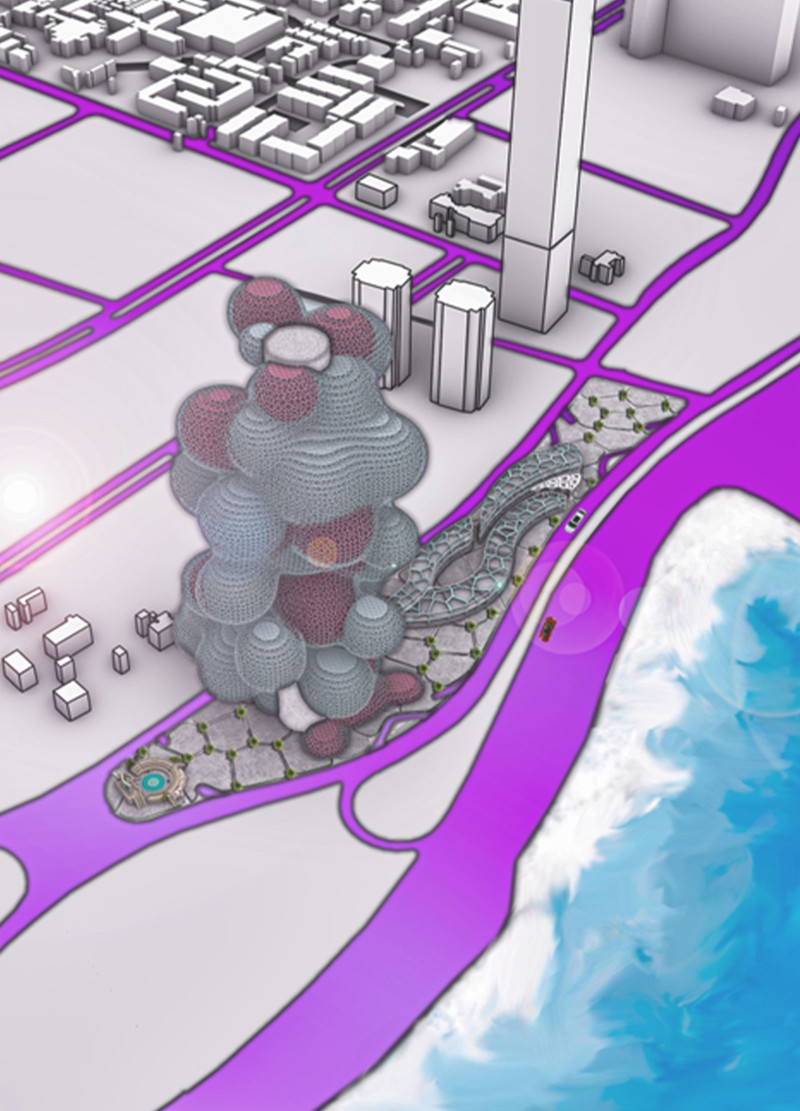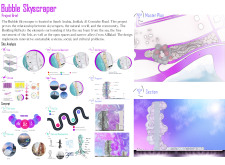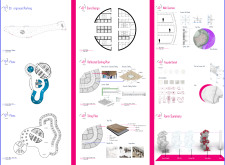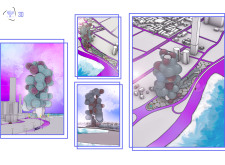5 key facts about this project
Unique Design Approaches
The architecture of the Bubble Skyscraper displays a commitment to sustainability and environmental responsibility. The undulating façade, composed of various transparencies, not only enhances aesthetic appeal but also allows for natural light penetration while minimizing solar heat gain. The effective use of glass, steel, concrete, wood, vinyl, and marble tiles forms a material palette that balances durability with softness and warmth in interior spaces.
One distinguishing feature of the project is its adaptive landscaping that promotes ecological health while providing public spaces for community interaction. Pathways within the building are designed organically, mimicking natural water flows to encourage exploration and engagement with the structure.
Sustainability is further integrated through rainwater harvesting systems and renewable energy solutions such as solar panels. These aspects align with contemporary architectural practices that emphasize environmental stewardship and social responsibility.
Functional Areas and Details
The Bubble Skyscraper includes various functional areas designed to enhance interaction and usability. Vertical circulation points promote accessibility across multiple levels, and innovative zoning allows for different uses within the same structure. The building’s design incorporates spaces for social gatherings and cultural events, addressing the community-focused philosophy behind the project.
Careful attention to detail is evident in the architectural sections and plans, which illustrate the strategic placement of communal areas and private spaces. Incorporating art installations invites dialogue and enhances the connection between the building's users and the surrounding environment.
For a comprehensive understanding of the Bubble Skyscraper, explore the architectural plans, designs, and sections. These resources provide further insights into the project’s unique characteristics and its contribution to Jeddah's architectural landscape.

























